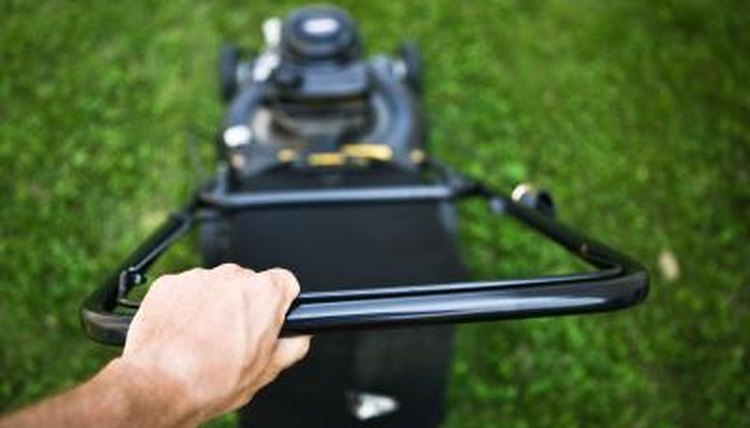Muscles Used in Lawn Mowing

Lawn mowing could be considered a menial task for many home and property owners, or to professional landscapers that do so for a living, but there’s no doubt that it’s hard work. Lawn mowing, at least operating the walk-behind push mowers, is a form exercise that uses muscle groups all over the body to push, pull and turn the mower in order to perform this basic chore.
Pushing
Much like the standard pushup or flat-lying bench press, the chest muscles are primarily responsible for pushing the mower in a forward motion. The pectoralis major and minor, or “pecs” in gym-speak, flex to provide the force for propulsion while the upper arm muscles on the backs of the arms, the triceps, help lock the forearms in place over the mover and aid the pecs. These muscles work in a synergistic fashion; that is, they complement one another to perform the task. The shoulders (“deltoids”), specifically the front portion, add backup to the other groups by flexing the arm forward onto the bar of the mower. The legs, made up of the quadriceps on the front and hamstrings on the back, help the gluteals (essentially your “butt muscles”) move the mower over terrain.
Pulling
When pulling the mower backward over a patch of grass, the muscles on the back of the body receives most of the workload and the front, although still working, catches some “rest.” The latisimmus dorsi, the large sheet-like muscle that covers the back, comes into play. This muscle, along with some of the muscles of the rotator cuff and rhomboid muscles of the upper middle back, pull the mower toward you. Helping make the action possible are the biceps muscles of the front upper arm and the rear section of the triple-sided deltoid muscle. The muscles of the legs are largely left unchanged, although more stress may be added to the front four muscles that make up the quads.
Turning
Turning is a complex motion that is essentially a smorgasbord of the previously mentioned actions; all muscles come into play, and more stress may be added to the core (the abdominals, hips, low back and glutes) to perform this action. Depending on the height of the grass, meaning you’d have to push down on the mower while turning to ready yourself to cut the next section, would require the use of the pushing muscles in conjunction with the core muscles. Additional leg muscles like the adductors on the inner thighs help bring your legs back together following the turn.
References
- “ACSM’s Guidelines for Exercise Testing & Prescription”; Walter L. Thompson & Neil F. Gordon; 2009
